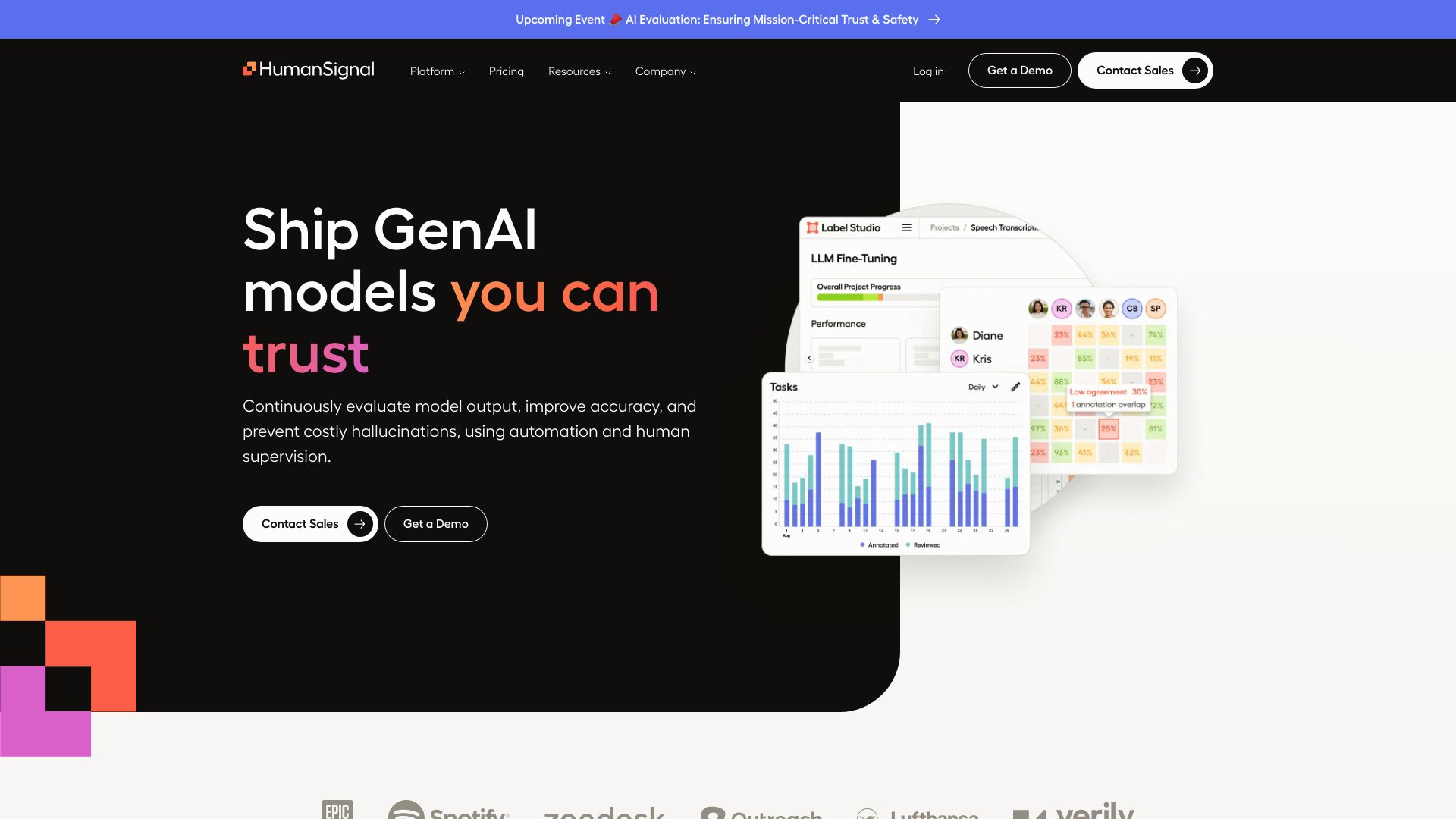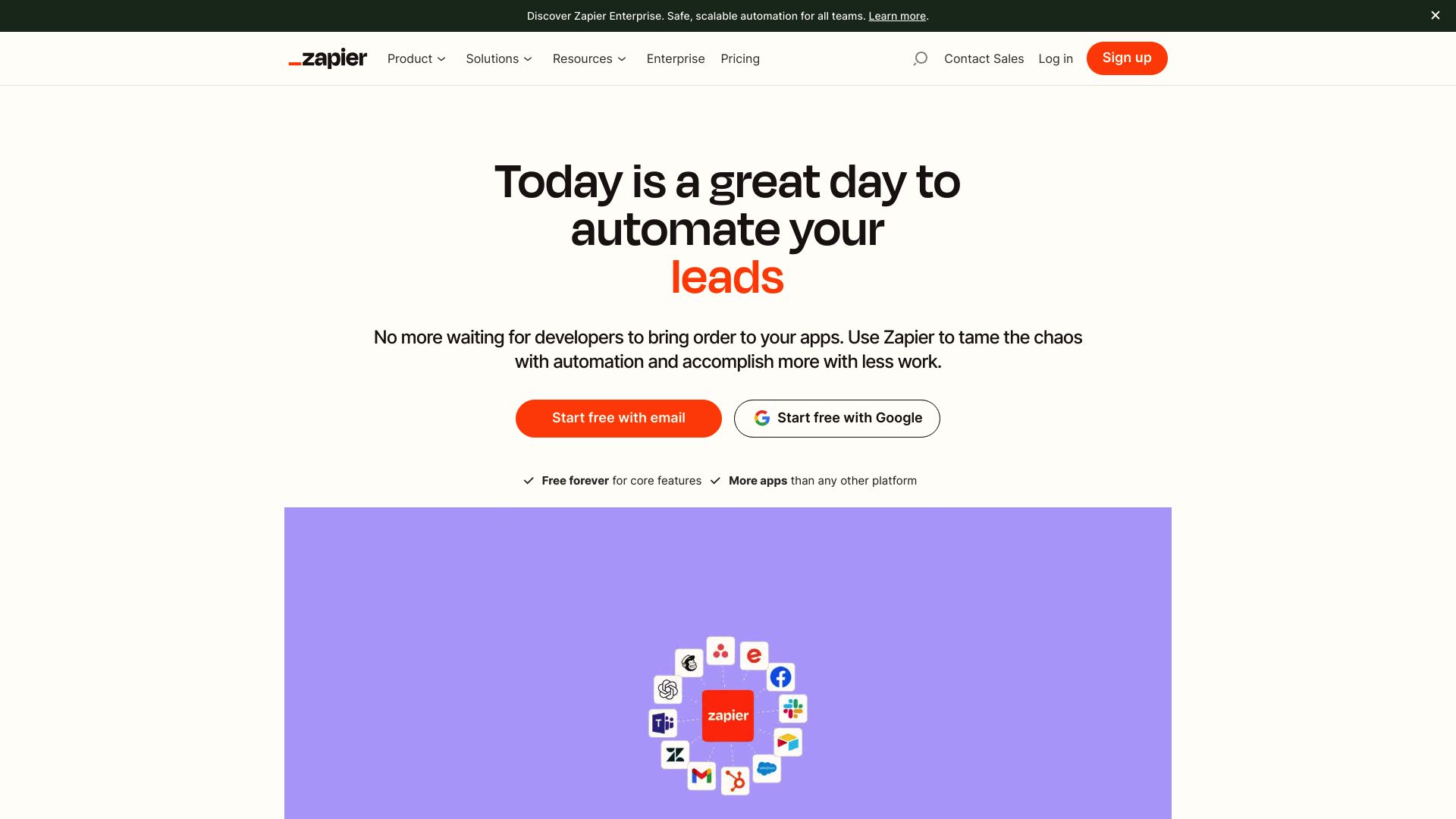Adala vs. Zapier: AI Agents or Workflow Automation?
AI platforms revolutionize business operations, empowering organizations to harness advanced technologies for enhanced productivity and innovation. This comparison explores three distinct solutions: Adala, an open-source framework for autonomous data labeling agents; Zapier, a user-friendly integration platform for workflow automation; and SmythOS, a comprehensive AI development and deployment ecosystem.
We’ll examine each platform’s strengths, limitations, and ideal use cases, helping you navigate the AI landscape to find the solution that best fits your organization’s needs. Whether you’re a developer seeking powerful AI tools, a business leader looking to streamline operations, or an entrepreneur exploring AI’s potential, this analysis provides valuable insights to guide your decision-making process.
Adala Overview
Adala pioneers an open-source framework for autonomous data labeling agents. This innovative platform empowers developers to create, train, and manage AI agents capable of learning and refining data labeling skills. Adala harnesses large language models as its core runtime, enabling agents to execute specialized tasks like text classification, summarization, and question answering.
Adala pioneers an open-source framework for autonomous data labeling agents… empowers developers to create, train, and manage AI agents capable of learning and refining data labeling skills.


Adala’s architecture centers on modularity and extensibility. The platform supports short-term and long-term memory for agents, allowing them to learn from past interactions and continuously improve their performance. This approach combines AI capabilities with human guidance, striking a balance between automation and reliability. Users can provide labeled ground truth datasets to guide agent training and request human feedback on predictions, ensuring high-quality outputs.
Adala’s architecture centers on modularity and extensibility. The platform supports short-term and long-term memory for agents, allowing them to learn from past interactions and continuously improve their performance.
The framework excels in handling various data types and processing large datasets. It supports multiple agents working collaboratively, each with different skills, to tackle complex data tasks. Adala also incorporates human-in-the-loop processes for improving and validating data labeling outcomes. While the platform offers robust capabilities for data labeling tasks, it lacks certain features like a visual builder or no-code editor, which might limit accessibility for non-technical users.
Adala’s open-source nature encourages community contributions, fostering continuous evolution and improvement of the platform. However, the absence of specific features like data encryption or OAuth authentication might pose challenges for enterprise-level security requirements. Despite these limitations, Adala’s focus on creating reliable, trustworthy AI agents for data labeling tasks positions it as a valuable tool for organizations seeking to enhance their data processing capabilities through AI-driven automation.
Zapier Overview
Zapier empowers users to connect and automate workflows across over 6,000 apps without coding. The platform’s visual builder enables creating multi-step “Zaps” that trigger actions when specific events occur in connected apps.


Zapier’s strength lies in its extensive integration library and user-friendly interface. Small businesses and non-technical users can quickly set up automated workflows for tasks like syncing customer data, managing leads, or posting social media updates. The platform supports both simple one-to-one connections and complex multi-step processes.
Zapier empowers users to connect and automate workflows across over 6,000 apps without coding.
While Zapier excels at app integration, it lacks true AI agent capabilities. The platform doesn’t offer natural language processing, machine learning, or autonomous decision-making features found in dedicated AI agent builders. This limits its ability to handle complex, context-dependent tasks or engage in human-like interactions.
Zapier’s focus on integration positions it as a powerful tool for workflow automation rather than an AI development platform. For businesses seeking to streamline processes across multiple apps, Zapier provides an accessible and effective solution. However, those needing advanced AI capabilities or looking to build intelligent, conversational agents may find Zapier’s offerings insufficient for their needs.
Feature Comparison
Adala and Zapier offer distinct approaches to automation and AI integration. Adala provides an open-source framework for building autonomous data labeling agents using large language models. In contrast, Zapier focuses on connecting apps and automating workflows without AI capabilities.
Adala excels in creating AI agents for specialized tasks like text classification and summarization. It supports short-term and long-term memory for agents, allowing continuous improvement through interactions. However, Adala lacks a visual builder or no-code editor, limiting accessibility for non-technical users. Zapier shines with its user-friendly visual interface and extensive app integrations, but cannot create true AI agents or handle complex, context-dependent tasks.
Security features highlight key differences. Adala’s open-source nature allows for community contributions but may pose challenges for enterprise-level security requirements. Zapier offers more robust security options for business users, including data encryption and OAuth authentication. Overall, Adala targets AI development for data processing, while Zapier caters to general workflow automation needs across industries.
| Adala | Zapier | SmythOS | |
|---|---|---|---|
| CORE FEATURES | |||
| AI Agents | ✅ | ❌ | ✅ |
| Hosted Agents (Dev, Production) | ❌ | ❌ | ✅ |
| Visual Builder | ❌ | ✅ | ✅ |
| No-Code Options | ❌ | ✅ | ✅ |
| Memory & Context | ✅ | ❌ | ✅ |
| Autonomous Agents | ✅ | ❌ | ✅ |
| Explainability & Transparency | ✅ | ❌ | ✅ |
| Debug Tools | ❌ | ✅ | ✅ |
| Multimodal | ❌ | ❌ | ✅ |
| Problem-Solving Capabilities | ✅ | ❌ | ✅ |
| Multi-Agent Collaboration | ❌ | ❌ | ✅ |
| Human-AI Interaction | ✅ | ❌ | ✅ |
| Audit Logs for Analytics | ❌ | ✅ | ✅ |
| Agent Work Scheduler | ✅ | ❌ | ✅ |
| SECURITY | |||
| Constrained Alignment | ✅ | ❌ | ✅ |
| Data Encryption | ❌ | ✅ | ✅ |
| OAuth | ❌ | ✅ | ✅ |
| IP Control | ❌ | ❌ | ✅ |
| COMPONENTS | |||
| Foundation AIs | ✅ | ❌ | ✅ |
| Huggingface AIs | ❌ | ❌ | ✅ |
| Zapier APIs | ❌ | ✅ | ✅ |
| All other APIs, RPA | ❌ | ✅ | ✅ |
| Classifiers | ✅ | ❌ | ✅ |
| Logic | ✅ | ❌ | ✅ |
| Data Lakes | ❌ | ❌ | ✅ |
| DEPLOYMENT OPTIONS (EMBODIMENTS) | |||
| Deploy as Webhook | ❌ | ✅ | ✅ |
| Staging Domains | ❌ | ✅ | ✅ |
| Production Domains | ❌ | ✅ | ✅ |
| API Authentication (OAuth + Key) | ❌ | ✅ | ✅ |
| Deploy as Site Chat | ❌ | ❌ | ✅ |
| Deploy as Scheduled Agent | ❌ | ❌ | ✅ |
| Deploy as GPT | ✅ | ❌ | ✅ |
| DATA LAKE SUPPORT | |||
| Hosted Vector Database | ✅ | ❌ | ✅ |
| Sitemap Crawler | ❌ | ❌ | ✅ |
| YouTube Transcript Crawler | ❌ | ✅ | |
| URL Crawler | ❌ | ❌ | ✅ |
| PDF Support | ❌ | ❌ | ✅ |
| Word File Support | ❌ | ❌ | ✅ |
| TXT File Support | ❌ | ❌ | ✅ |
Best Alternative to Adala and Zapier
SmythOS stands out as the superior alternative to Adala and Zapier, offering a comprehensive AI automation platform that combines the best of both worlds. We provide a powerful solution for creating and deploying AI agents with unparalleled flexibility and ease of use.
Our visual builder and no-code options make SmythOS accessible to users of all technical backgrounds, unlike Adala’s more developer-focused approach. At the same time, we offer advanced AI capabilities that surpass Zapier’s workflow automation, allowing for true intelligent agents that can handle complex, context-dependent tasks.
SmythOS stands out as the superior alternative to Adala and Zapier, offering a comprehensive AI automation platform that combines the best of both worlds.
SmythOS excels in its extensive feature set, offering capabilities neither Adala nor Zapier can match. We support multimodal interactions, problem-solving capabilities, and multi-agent collaboration, enabling sophisticated AI solutions for diverse use cases. Our platform also provides robust security features, including data encryption and OAuth authentication, addressing enterprise-level concerns that Adala’s open-source nature may not fully satisfy.
Perhaps most importantly, SmythOS offers unparalleled scalability and deployment options. We allow users to deploy AI agents as APIs, webhooks, scheduled tasks, or even integrate them into popular platforms like ChatGPT. This versatility, combined with our support for a wide range of data sources and file types, makes SmythOS the ideal choice for businesses looking to leverage AI across their operations.
By choosing SmythOS, users gain access to a cutting-edge AI platform that not only meets current needs but is also poised to adapt to future trends in AI development. Our commitment to user-friendly design, enhanced integration capabilities, and ethical AI practices ensures that SmythOS will remain at the forefront of AI innovation, providing a future-proof solution for all your AI agent needs.
Conclusion
SmythOS stands out as the superior choice among Adala, Zapier, and itself for AI agent development and workflow automation. While Adala offers specialized data labeling capabilities and Zapier excels in app integrations, SmythOS provides a comprehensive platform that combines the strengths of both while offering advanced AI functionalities.
SmythOS’s visual builder and no-code interface make it accessible to both technical and non-technical users, addressing limitations found in Adala’s developer-centric approach. Unlike Zapier, SmythOS incorporates true AI agent capabilities, enabling complex, context-dependent tasks and human-like interactions. The platform’s support for multimodal interactions, problem-solving, and multi-agent collaboration surpasses the offerings of both Adala and Zapier.
Security-conscious organizations will appreciate SmythOS’s robust features, including data encryption and OAuth support, which may be lacking in open-source solutions like Adala. For businesses seeking a scalable, versatile AI platform that can handle everything from data processing to workflow automation, SmythOS emerges as the clear winner. Create a free SmythOS account to experience the power of advanced AI agent development and deployment for yourself.
Last updated:
Disclaimer: The information presented in this article is for general informational purposes only and is provided as is. While we strive to keep the content up-to-date and accurate, we make no representations or warranties of any kind, express or implied, about the completeness, accuracy, reliability, suitability, or availability of the information contained in this article.
Any reliance you place on such information is strictly at your own risk. We reserve the right to make additions, deletions, or modifications to the contents of this article at any time without prior notice.
In no event will we be liable for any loss or damage including without limitation, indirect or consequential loss or damage, or any loss or damage whatsoever arising from loss of data, profits, or any other loss not specified herein arising out of, or in connection with, the use of this article.
Despite our best efforts, this article may contain oversights, errors, or omissions. If you notice any inaccuracies or have concerns about the content, please report them through our content feedback form. Your input helps us maintain the quality and reliability of our information.
